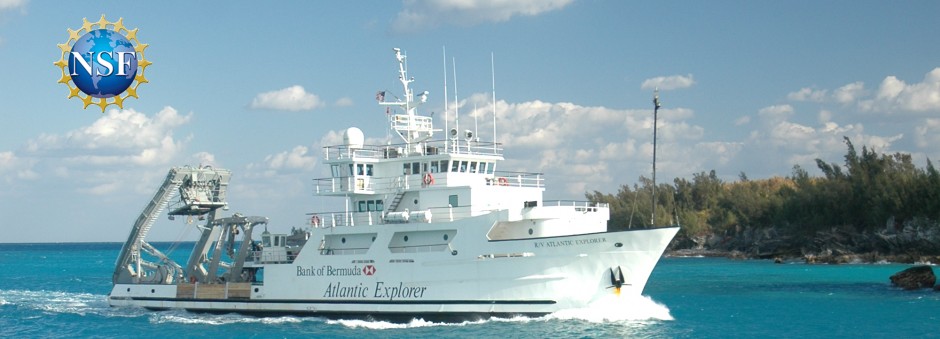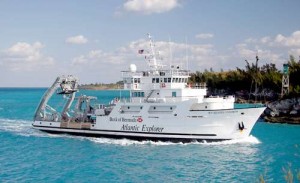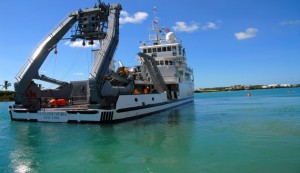The R/V Atlantic Explorer is a 171 foot research vessel owned and operated by the Bermuda Institute of Ocean Sciences
The R/V Atlantic Explorer has had many different lives (and names) before becoming the ship that we see today. Built in 1982 Louisiana (USA) she was originally called the Sea Trojan and worked as an offshore supply vessel for the oil rigs in the Gulf of Mexico. In this role she transported the liquid mud used for drilling, and her shallow flat bottom was great for working in shallow water. During this time she looked pretty different from today, without the lab spaces or A-frames (and was probably a lot muddier).
In her next life she became the Edwin Link (after the man who designed the airplane flight simulator) and worked as a manned submersible support vessel. She acquired the large A-frame, capable of lifting 18 tons, which could lift small submarines on to the ship. She then became the Steward Johnson II.
She came to BIOS in 2006 and became the Atlantic Explorer. A new bridge was added on top of the old bridge (after first cutting off the old bridge and turning it around). This means that the bridge is great for deck work – as the captain has a great view of the back deck.
She has a net weight of 203 tons, and has two 900 horse-power engines which provide the power to get her to cruise at 10.2 knots (about 13 mph). To go from full speed to stopped takes just over 2 minutes.


